Mame Mame serves up a little known local specialty: Usuyaki

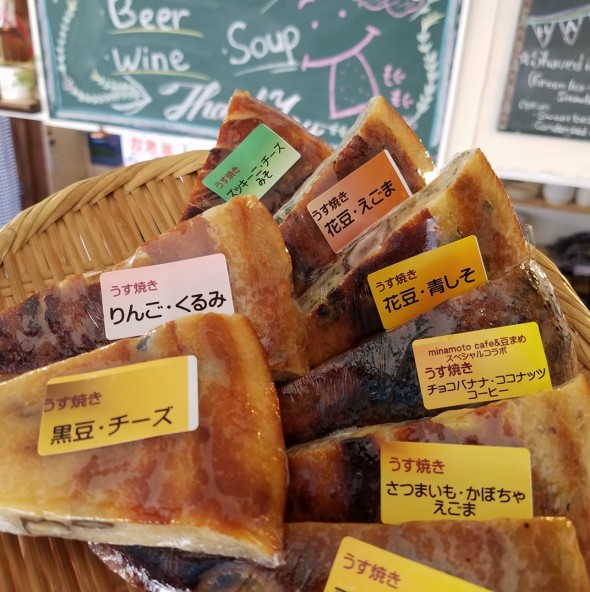
When I started looking into the local foods in Matsumoto, I learned about soba (buckwheat noodles), oyaki (a kind of stuffed dumpling), sanzokuyaki (marinated and deep-fried chicken), and nozawana green pickles. Usuyaki, however, never came up.
So when I spotted Mame Mame (pronounced “mah-may mah-may”), which on its shop windows boldly proclaims to sell “usuyaki, a Matsumoto local food,” it instantly piqued my curiosity. What was this supposed local specialty and why hadn’t I heard of it? So, when I popped into the shop, I took the chance to ask Mr. Maruyama, the Mame Mame’s owner, all about usuyaki.
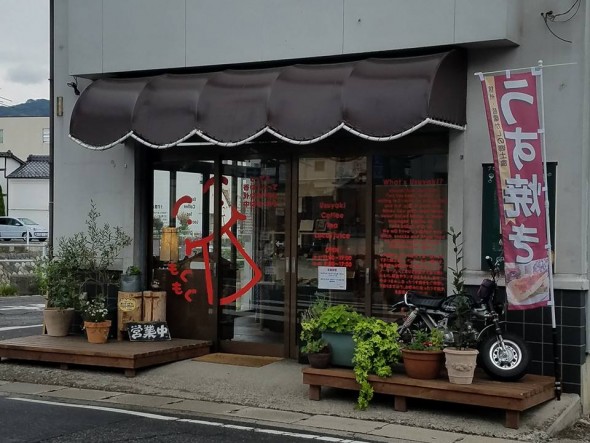
Mr. Maruyama describes usuyaki as “Matsumoto-style pancakes,” though they are quite different from the fluffy, maple syrup-doused breakfast version you might typically think of when hearing the word “pancake.” In Japan, traditionally usuyaki was cooked when rice was scarce and also served as a way to use up leftovers: cooked beans, vegetables, and even steamed rice.
To make usuyaki, leftover scraps of food or cooked vegetables are mixed with flour, water, and sometimes eggs to make a batter, which is then fried in an oiled pan like a pancake. There is no set recipe—just like everyone in the U.S. has their own recipe for the “best” pot of chili, every household here makes their usuyaki different from their neighbors: Some people use eggs and some don’t; some usuyaki are thin and flabby and others are thick and dense.
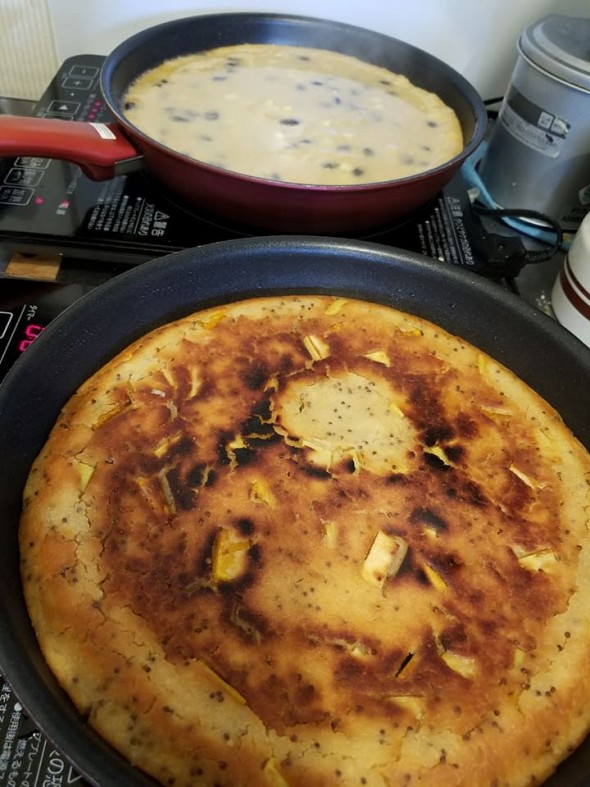
Technically, you can find usuyaki in nearby regions outside of city, but Mr. Maruyama, a native of Yokohama, was inspired by the usuyaki he ate in his wife’s hometown, the Nagawa area of Matsumoto. Here, he told me, the older ladies would whip up usuyaki as a snack to take with them to their farms or to give to children when they came home from school. Although locals would regard these pancakes as nothing more than a humble way to use up leftovers (hence its absence from local food shops and internet searches), Mr. Maruyama found the dish and its endless variety so fascinating that he decided to open a cafe in Matsumoto dedicated to it.
At Mame Mame, Mr. Maruyama offers about eight kinds of usuyaki every day, including sweet and savory flavors. He uses only local, Nagano-produced flour and buckwheat flour as the base for the batter. The fruits, vegetables, and herbs used to create the different flavors are chosen based on what is in season locally—including many ingredients that are grown on Mr. Maruyama’s own farm in Nagawa.
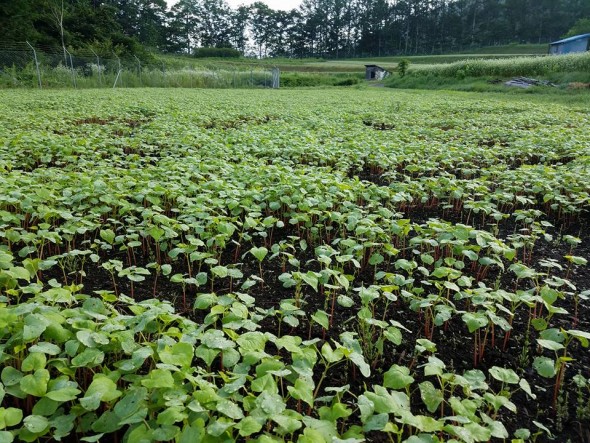
The traditional usuyaki mix-ins include kabocha squash, sweet potatoes, and hanamame beans; while more unorthodox versions might be flavored with cheese and sausages, or verge on the sweet side with apples and cinnamon, or chocolate and bananas. The batter is fried into thick, round pancakes, then cut into wedges so you can easily try several flavors. The price for one wedge ranges from ¥180 to ¥250.
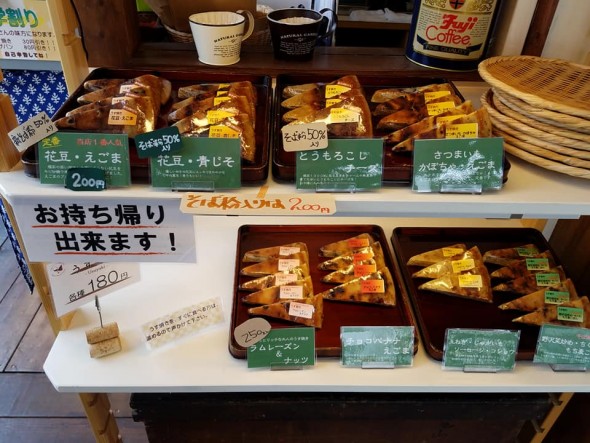
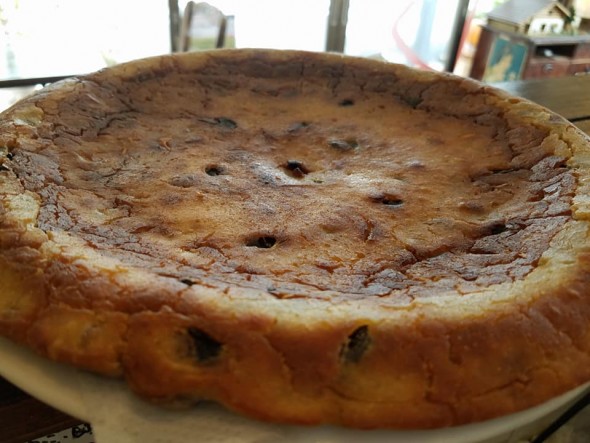
For my first taste of usuyaki, I tried the popular “hanamame bean and egoma seed” flavor. Hanamame beans are large, purplish, locally grown beans that are cooked to be slightly sweet. Egoma seeds come from a plant related to the Japanese herb, shiso (also known as perilla or beefsteak plant), and adds a delightful and subtle crackling texture to the usuyaki. The batter was made with fifty percent buckwheat flour which gave batter a wonderfully toasty aroma.
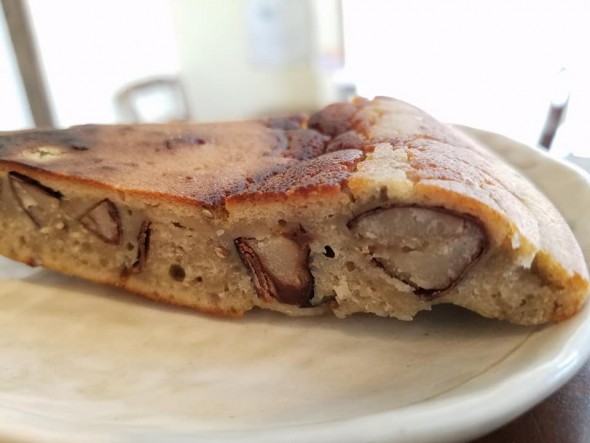
You can get usuyaki as a take-out snack, or turn it into a light lunch combo with soup. It makes a great treat to bring for hiking or walking around Matsumoto. On Sundays and holidays, you can also get it for breakfast starting at nine o’clock. Mame Mame has a good assortment of drinks like coffee, tea, local juices, wine, and beer. You can eat at the counter in the shop and there are even outlets with phone chargers available! Shop hours and location are as follows:
Shop Hours
Weekdays & Saturday: 11:00 a.m.–7:00 p.m. (Closed on Wednesdays)
Sunday & holidays: 9:00 a.m.–5:00 p.m.
Lunchtime hours: 11:30 a.m.–2:00 p.m.
Location and Map
Mame Mame is located on the east end of the Nakamachi Area, less than a 15-minute walk from the castle and about 10 minutes from the station.
(Photos from Mame Mame’s Facebook page, used with permission)